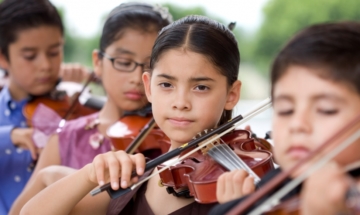Topic: Educational Change

The Politics of Poverty: Why We Still Haven’t Solved the Issue
First, there is no consensus about poverty’s causation. Virtually all disciplines move through three phases: classification, where things are named; correlation, an explanation of how things work together; and causation, which explains what creates a phenomenon. Regarding the latter, the field of sociology has four separate, well-researched bases[ii] about what... Read the full article >

Responding to Marginalization of Students of Color in K-12 Education
In a culture of school reform that focuses on student achievement as measured through standardized curriculum and testing, marginalized groups are traditionally less successful. For students who come from high-risk backgrounds such as being a person of color, living in poverty, being an immigrant, having limited English proficiency, and/or having a... Read the full article >

The Role of Social Capital to Create Change
She soon discovered that a new school that focused on reading, writing and math was about to open. She took off work and stood in line for enrollment to make sure I had the opportunities that she did not. I was fortunate that my parents were involved in my education and used... Read the full article >

State Policies to Overcome the Achievement Gap and Poverty
America’s public schools serve more than 50 million students from kindergarten through 12th grade and more than 50 percent of those students qualify for free and reduced-priced lunch (FRPL) under the National School Lunch Program. In 2013, 24 percent of public school students attended a high-poverty school—schools where more than... Read the full article >

A Model for Building Equity in Education with Atlanta Place-Based Funders
These Atlanta place-based funders are targeting their philanthropic efforts and support collaboratively around the key issues of health, education and neighborhood vitality: Annie E. Casey Foundation Atlanta Civic Site – Neighborhood Planning Unit V which includes five Atlanta neighborhoods: Summerhill, Peoplestown, Adair Park, Pittsburgh and Mechanicsville. C.F. Foundation – East Lake... Read the full article >

The Legacy of Racial Inequity in Urban America – and How to Reverse It
The most important civil rights accomplishment of the 20th century was the dismemberment of the legal architecture of Jim Crow. Reversing the lasting societal impact of inequity from Jim Crow, redlining and related racist policies that still shape the segregation we see across America today is the work that still... Read the full article >

Educational Equity: The New Institution Revolution
For the first time in American history, the majority of students within the American public school system are students of color and yet the educational equity that Brown promised is still far from a reality. According to the latest data from the U.S. Department of Education’s Civil Rights data collection,... Read the full article >

An Equitable Education Matters Significantly
Equal — the same in number, amount, degree, rank or quality. Not changing, the same for every person. Equality — the state of being equal in political, economy and social rights. Equity — fairness or justice in the way people are treated. (Merriam-Webster) I watched with great interest the summer... Read the full article >

The (Dys)function of Empathy – Activating the Right Type of Empathy to Increase Equity in the Classroom
“Another type of teacher empathy I saw was one that sought to understand the ‘why’ behind success and failure and then invested in the student accordingly. The teachers who used it were driven to understand each student as an individual so that equitable accommodations could be made. It wasn’t always comfortable... Read the full article >

Green STEM: STEM as It's Meant to Be
Roland Quitugua, a leading scientist in the U.S. territory of Guam, stood before a room of 60 public school teachers, describing his tireless efforts to eradicate a devastating problem on the tiny island in the Western Pacific: the Coconut Rhinoceros Beetle. Holding an embroidery hoop with a three centimenter black... Read the full article >